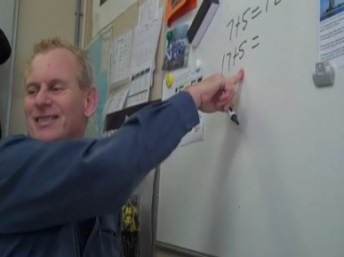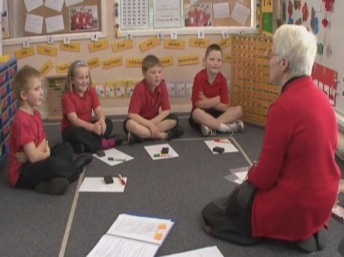|
Effective teachers support students in making connections between different ways of solving problems, between mathematical representations and topics, and between mathematics and everyday experiences. |
Students need opportunities to apply maths to everyday contexts and to appreciate mathematics as part of their own lives. Teachers must have a deep understanding of the mathematics to be able to facilitate responsive and productive mathematical discussions. Connections between student understandings and the big mathematical ideas need to be expertly developed and made explicit. Connections need to be made within and across topics and between apparently separate mathematical ideas, as students can be readily distracted by contexts and may compartmentalize concepts rather than seeing the interconnectedness of mathematics.
By sharing solutions students can develop a deeper mathematical understanding through connections made with and by others’ strategies and ideas.
Stories here highlight the importance of making these connections. It is made clear that exposing students to a range of different physical and pictorial representations of a particular mathematical idea and by making explicit the connections between the representations develops a deeper understanding of that concept.
There is a useful warning to never to assume that students see connections which, to the teacher, appear obvious.
Exemplars:
|
Equipment was always on hand to support the students with their written recordings, to help with the reversal of numbers and to support confusions around teen and ty numbers. The children drew patterns, pictures, wrote numbers, equations etc. and these then became a resource that went on the wall. We made number charts for the walls, for example, number of the week, looking at where we had seen these numbers and how we could show these numbers in different ways. These types of activities made connections for the students as they were able to see numbers in context and this opened their eyes to see numbers all around them in everyday life.
(St Mary's School)
|
|
Children needed support to see the links between mathematical ideas. This seemed more evident with a group of under achieving students. It was important to always provide a range of equipment and model different ways to record their thinking. The ‘light went on’ for different students at different times, using different materials. (Stanmore Bay School)
|
|
Making links: making links and building on prior learning was a good way of extending and moving these children on. Starting with patterns to five and using fives frames, then moving on to tens frames didn’t seem such a big jump when I was able to base the ten knowledge and activities on what we had done with the fives. We followed the same routine using double sided counters for both fives frames and tens frames. We ordered numbers to five and then moved onto ordering numbers to ten etc.
(Awapuni School)
|
|
The key ideas I wanted to develop around place value learning were the links between the number (written), the language (how it is said) and the symbolic representation (how it looks and can be made).
Be explicit (overt) with your teaching. Don’t ever assume that the connection between things is so obvious that children will have made it themselves. This is something that has really bugged me during the project. How many times have I wrongly made the assumption that the connection has been made? I don’t do that any more. This is especially true for teaching place value. The connection between the number, the language and the representation is absolutely crucial for students.
(Central Normal School)
|


